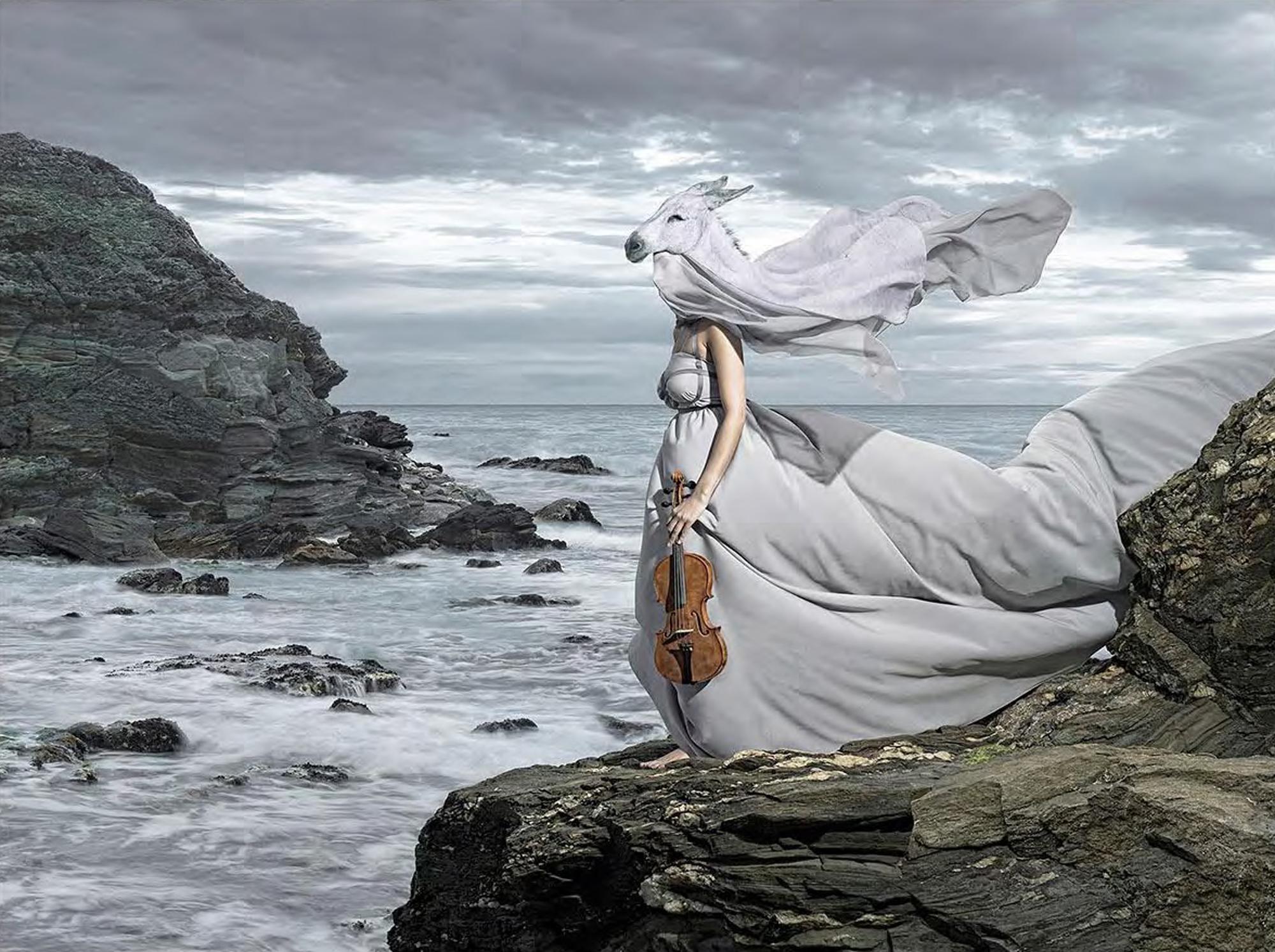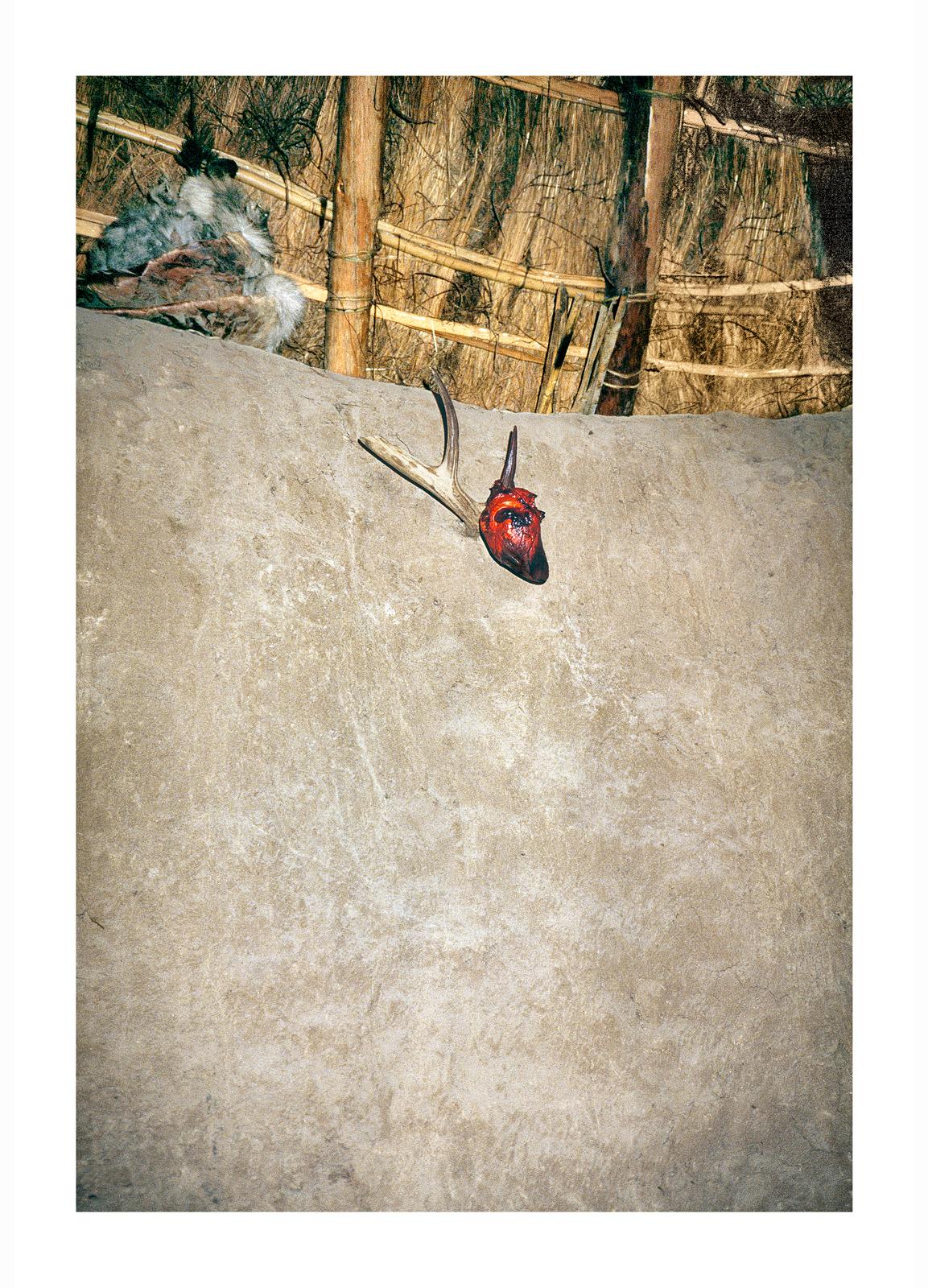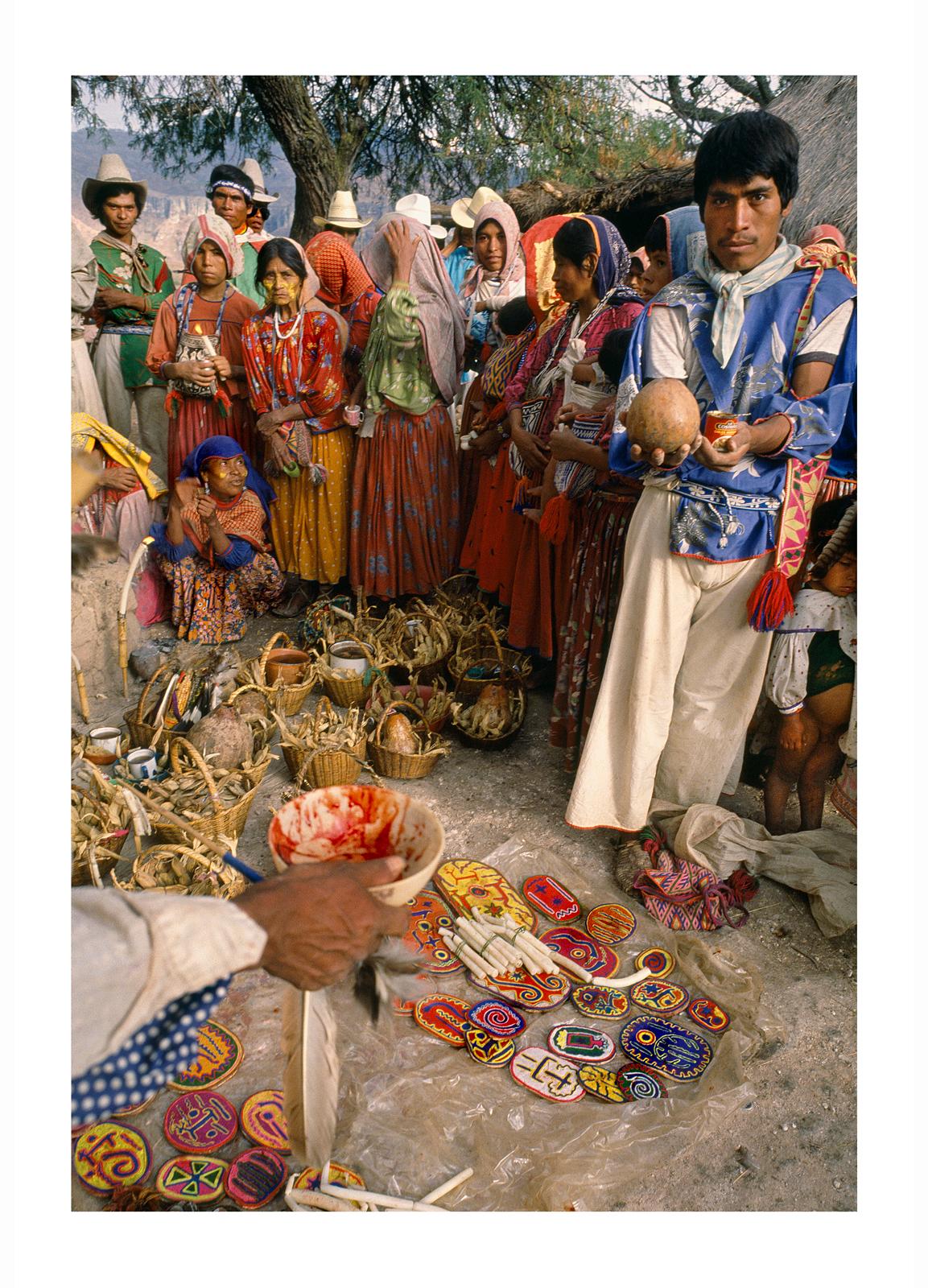Items Similar to Campbell – Nick Knight, Naomi Campbell, White Short Dress, Woman, Model, Fashion
Want more images or videos?
Request additional images or videos from the seller
1 of 7
Nick KnightCampbell – Nick Knight, Naomi Campbell, White Short Dress, Woman, Model, Fashion2007
2007
About the Item
NICK KNIGHT (*1958, Great Britain)
Campbell
2007
Hand-coated pigment print
Image 146.69 x 218.14 cm (57 3/4 x 85 7/8 in.)
Sheet 152.4 x 225.5 cm (60 x 88 3/4 in.)
Frame 158 x 229.5 x 6cm (62 1/4 x 90 3/8 x 2 3/8 in.)
Edition of 5, plus 2 AP; Ed. no. 2/5
Nick Knight is among the world’s most influential and visionary photographers. He has worked on a range of often controversial issues during his career – from racism, disability, ageism, and more recently fat-ism. He continually challenges conventional ideals of beauty.
Knight made fashion history in November 1993 by adapting ring-flash photography to capture Linda Evangelista for a landmark, post-grunge cover of British Vogue. Since then, his work has graced no fewer than 36 covers. He has shot advertising campaigns for Jil Sander, Louis Vuitton, Calvin Klein, Yves Saint Laurent, Vivienne Westwood, Alexander McQueen and Christian Dior to name a few. He has also shot record covers for David Bowie, Paul Weller, George Michael and Massive Attack.
Knight’s work has been exhibited at institutions such as the Victoria & Albert Museum, Saatchi Gallery, The Photographers’ Gallery, the Hayward Gallery and recently the Tate Modern. Knight has also turned his hand to directing music videos - Pagean Poetry by Björk in 2001 being his first and, most recently, Kanye West’s Bound 2. He directed the video for Lady Gaga’s hit single Born This Way in 2011. Both the song and the video aimed to empower and show solidarity within minority groups, a common theme in Knight’s work.
This work is accompanied by a signed and numbered certificate of authenticity from Nick Knight studio.
– Photography, Naomi Campbell, Woman, Fashion, Dress, Contemporary
- Creator:Nick Knight (1958)
- Creation Year:2007
- Dimensions:Height: 56.26 in (142.9 cm)Width: 88.55 in (224.9 cm)
- Medium:
- Movement & Style:
- Period:
- Framing:Framing Options Available
- Condition:
- Gallery Location:Zurich, CH
- Reference Number:1stDibs: LU128015045661
About the Seller
5.0
Recognized Seller
These prestigious sellers are industry leaders and represent the highest echelon for item quality and design.
Established in 2006
1stDibs seller since 2019
25 sales on 1stDibs
Typical response time: <1 hour
- ShippingRetrieving quote...Ships From: Zurich, Switzerland
- Return PolicyA return for this item may be initiated within 1 day of delivery.
More From This SellerView All
- Wear NIKE 3 – John Yuyi, Fashion, Millenial, Photography, Art, Temporary TattooLocated in Zurich, CHJOHN Yuyi (*1991, Taiwan) Wear NIKE 3, 2018 Archival Pigment Print Sheet 90 x 60 cm (36 x 24 in.) Edition of 6, plus 2 AP; Ed. no. 1/6 John Yuyi (*1991, Tai...Category
2010s Contemporary Figurative Photography
MaterialsArchival Pigment
- Untitled #16 - CB/KMC 8 SH 200 N13 – Bill Henson, People, Portrait, MonochromeLocated in Zurich, CHBill HENSON (*1955, Australia) Untitled #16 - CB/KMC 8 SH 200 N13, 1998/1999/2000 Archival pigment print Sheet 127 x 180 cm (50 x 70 7/8 in.) Edition of 5, plus 2 AP's; Ed. no. AP1 ...Category
1990s Contemporary Figurative Photography
MaterialsArchival Pigment
- Untitled #17 - NH SH83 N19 – Bill HensonLocated in Zurich, CHBill HENSON (*1955, Australia) Untitled #17 - NH SH83 N19, 2007/2008; printed 2010 Archival Inkjet Pigment Print Sheet 127 x 180 cm (50 x 70 7/8 in.) Frame 128.5 x 178.5 x 5 cm (50 5...Category
Early 2000s Contemporary Figurative Photography
MaterialsArchival Pigment
- Untitled #1 - CL SH655 N1 – Bill Henson, Monochrome, Landscape, Water, MountainLocated in Zurich, CHBill HENSON (*1955, Australia) Untitled #1 - CL SH655 N16B, 2009/2010 Archival pigment print Sheet 127 x 180 cm (50 x 70 7/8 in.) Edition of 5, plus 2 AP's; Ed. no. 4/5 Print only ...Category
Early 2000s Contemporary Figurative Photography
MaterialsArchival Pigment
- Untitled #16 - AH SH4 N13 – Bill Henson, People, Portrait, Monochrome, Girl, ArtLocated in Zurich, CHBill HENSON (*1955, Australia) Untitled #16 - AH SH4 N13, 2009/2010 Archival pigment print Sheet 127 x 180 cm (50 x 70 7/8 in.) Edition of 5, plus 2 AP's; Ed. no. 5/5 (last availabl...Category
1990s Contemporary Figurative Photography
MaterialsArchival Pigment
- Married Myself – Emma Summerton, Fine Art Photography, Color, B/W, EmbellishedBy Emma SummertonLocated in Zurich, CHEMMA SUMMERTON (*1970, Australia) Married Myself, 2023 Archival pigment print on Hahnemühle paper, hand-embellished with ink and watercolour mounted on Aluminium Dibond with wooden b...Category
2010s Contemporary Color Photography
MaterialsArchival Pigment
You May Also Like
- Saddle-billed Storks and ElephantsBy Cheryl MedowLocated in Dallas, TXEdition of 6 Signed and numbered in pencil, and blind stamp on print margin Signed, titled, dated, and print type in pencil on print verso. Paper size: 37 x 30 in., Image size: 30 x ...Category
2010s Contemporary Color Photography
MaterialsArchival Pigment
- HUICHOL: MOUNTAIN, DESERT, NEW YORK (`95-`21). Limited edition of 5.By PABLO ORTIZ-MONASTERIOLocated in Ciudad De México, MXDocumentary Photograph. Contemporary Inkjet on cotton. Limited edition of 5. Signed front and verso. Framed in lacquered black frame with spacer) The first person to photograph the Huichol in their remote communities in the inaccessible canyons of the Western Sierra Madre was probably the Norwegian anthropologist, Carl Lumholtz. He ventured into their territory in 1895, shortly before the arrival of the French naturalist and ethnographer Léon Diguet, who was also a photographer. Like so many who were engaged with documenting Indigenous peoples across the Americas in those brutal years of expansion and settlement, Lumholtz believed that the disappearance of his subjects was inevitable: “the weaker must succumb to the stronger, and the Indians will ultimately all become Mexicans.” The photographs of the Huichol by Pablo Ortiz Monasterio—taken on some twenty trips over the past three decades—prove that Lumholtz was fortunately, terribly wrong. They reveal abundant evidence of cultural survival (what the Huichol call “la costumbre”), made possible by their extraordinary resistance to the religious, nationalist, and economic forces that have long assaulted—and that continue to assault—Indigenous communities everywhere. Though Ortiz Monasterio is also an outsider, he does not operate—like Lumholtz or Diguet—as an old-fashioned preservationist, nor is he confident in the superiority of Western culture, nor is his work only destined for museum vitrines...Category
1990s Contemporary Color Photography
MaterialsArchival Pigment, Inkjet
- Once Upon a Time: Piel de Asno.Located in Ciudad De México, MXFernando Bayona, Once Upon a Time: "Piel de Asno". Fine Art Inkjet Print Sizes: S: 25.6 x 20.8 in. / Ed. 3 M: 41.7 x 33 in. / Ed. 3 L: 53.1 x 41.7 in. / Ed. 2 + 1A.P "The narrat...Category
21st Century and Contemporary Contemporary Color Photography
MaterialsArchival Pigment, Inkjet
- HUICHOL: MOUNTAIN, DESERT, NEW YORK (`95-`21). Limited edition of 5.By PABLO ORTIZ-MONASTERIOLocated in Ciudad De México, MXDocumentary Photograph. Contemporary Inkjet on cotton. Limited edition of 5. Signed front and verso. Framed in lacquered black frame with spacer) The first person to photograph the Huichol in their remote communities in the inaccessible canyons of the Western Sierra Madre was probably the Norwegian anthropologist, Carl Lumholtz. He ventured into their territory in 1895, shortly before the arrival of the French naturalist and ethnographer Léon Diguet, who was also a photographer. Like so many who were engaged with documenting Indigenous peoples across the Americas in those brutal years of expansion and settlement, Lumholtz believed that the disappearance of his subjects was inevitable: “the weaker must succumb to the stronger, and the Indians will ultimately all become Mexicans.” The photographs of the Huichol by Pablo Ortiz Monasterio—taken on some twenty trips over the past three decades—prove that Lumholtz was fortunately, terribly wrong. They reveal abundant evidence of cultural survival (what the Huichol call “la costumbre”), made possible by their extraordinary resistance to the religious, nationalist, and economic forces that have long assaulted—and that continue to assault—Indigenous communities everywhere. Though Ortiz Monasterio is also an outsider, he does not operate—like Lumholtz or Diguet—as an old-fashioned preservationist, nor is he confident in the superiority of Western culture, nor is his work only destined for museum vitrines...Category
1990s Contemporary Color Photography
MaterialsArchival Pigment, Inkjet
- HUICHOL: MOUNTAIN, DESERT, NEW YORK (`95-`21). Limited edition of 5.By PABLO ORTIZ-MONASTERIOLocated in Ciudad De México, MXDocumentary Photograph. Contemporary Inkjet on cotton. Limited edition of 5. Signed front and verso. Framed in lacquered black frame with spacer) The first person to photograph the Huichol in their remote communities in the inaccessible canyons of the Western Sierra Madre was probably the Norwegian anthropologist, Carl Lumholtz. He ventured into their territory in 1895, shortly before the arrival of the French naturalist and ethnographer Léon Diguet, who was also a photographer. Like so many who were engaged with documenting Indigenous peoples across the Americas in those brutal years of expansion and settlement, Lumholtz believed that the disappearance of his subjects was inevitable: “the weaker must succumb to the stronger, and the Indians will ultimately all become Mexicans.” The photographs of the Huichol by Pablo Ortiz Monasterio—taken on some twenty trips over the past three decades—prove that Lumholtz was fortunately, terribly wrong. They reveal abundant evidence of cultural survival (what the Huichol call “la costumbre”), made possible by their extraordinary resistance to the religious, nationalist, and economic forces that have long assaulted—and that continue to assault—Indigenous communities everywhere. Though Ortiz Monasterio is also an outsider, he does not operate—like Lumholtz or Diguet—as an old-fashioned preservationist, nor is he confident in the superiority of Western culture, nor is his work only destined for museum vitrines...Category
1990s Contemporary Color Photography
MaterialsArchival Pigment, Inkjet
- HUICHOL: MOUNTAIN, DESERT, NEW YORK (`95-`21)By PABLO ORTIZ-MONASTERIOLocated in Ciudad De México, MXThe first person to photograph the Huichol in their remote communities in the inaccessible canyons of the Western Sierra Madre was probably the Norwegian anthropologist, Carl Lumholtz. He ventured into their territory in 1895, shortly before the arrival of the French naturalist and ethnographer Léon Diguet, who was also a photographer. Like so many who were engaged with documenting Indigenous peoples across the Americas in those brutal years of expansion and settlement, Lumholtz believed that the disappearance of his subjects was inevitable: “the weaker must succumb to the stronger, and the Indians will ultimately all become Mexicans.” The photographs of the Huichol by Pablo Ortiz Monasterio—taken on some twenty trips over the past three decades—prove that Lumholtz was fortunately, terribly wrong. They reveal abundant evidence of cultural survival (what the Huichol call “la costumbre”), made possible by their extraordinary resistance to the religious, nationalist, and economic forces that have long assaulted—and that continue to assault—Indigenous communities everywhere. Though Ortiz Monasterio is also an outsider, he does not operate—like Lumholtz or Diguet—as an old-fashioned preservationist, nor is he confident in the superiority of Western culture, nor is his work only destined for museum vitrines...Category
1990s Contemporary Color Photography
MaterialsArchival Pigment, Inkjet
Recently Viewed
View AllMore Ways To Browse
Short Dress
Short Dresses
Knights
The Knight
Gray Louis Vuitton Coat
Louis Vuitton White Coat
Louis Vuitton Print Coat
Song Theme
Louis Vuitton Availability
Christian Dior Short
Vuitton Beauty
Beauty Louis Vuitton
Saint Laurent 2011
Louis Vuitton Saint Louis
Louis Vuitton Gray And White
Christian Dior 2001
1993 Dresses
Michael Klein





